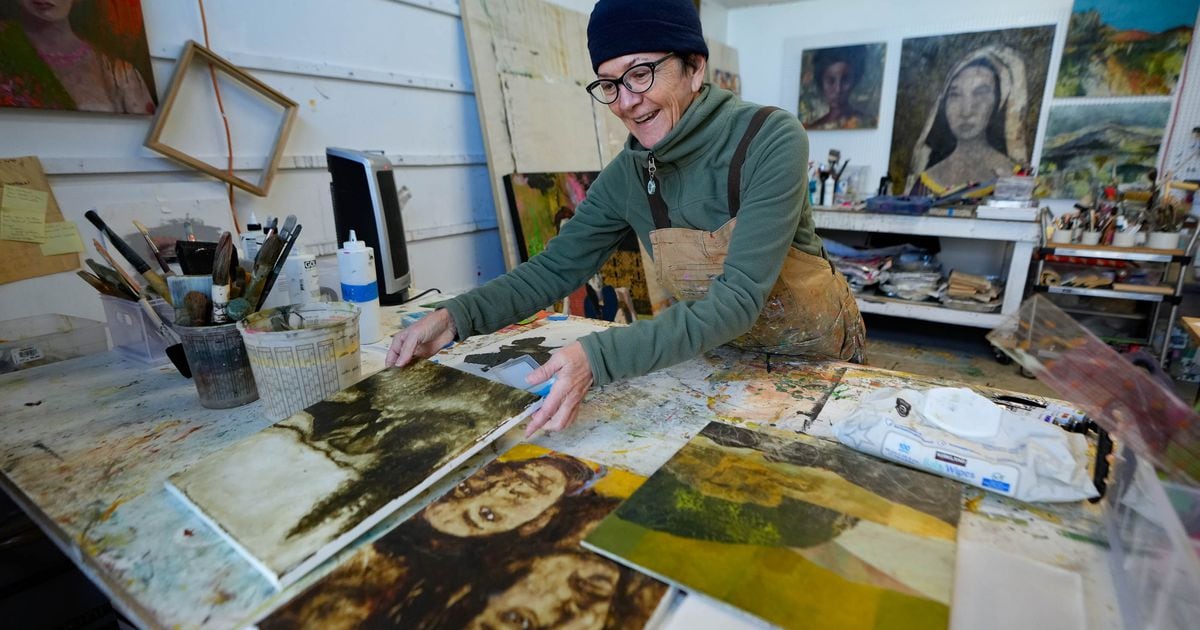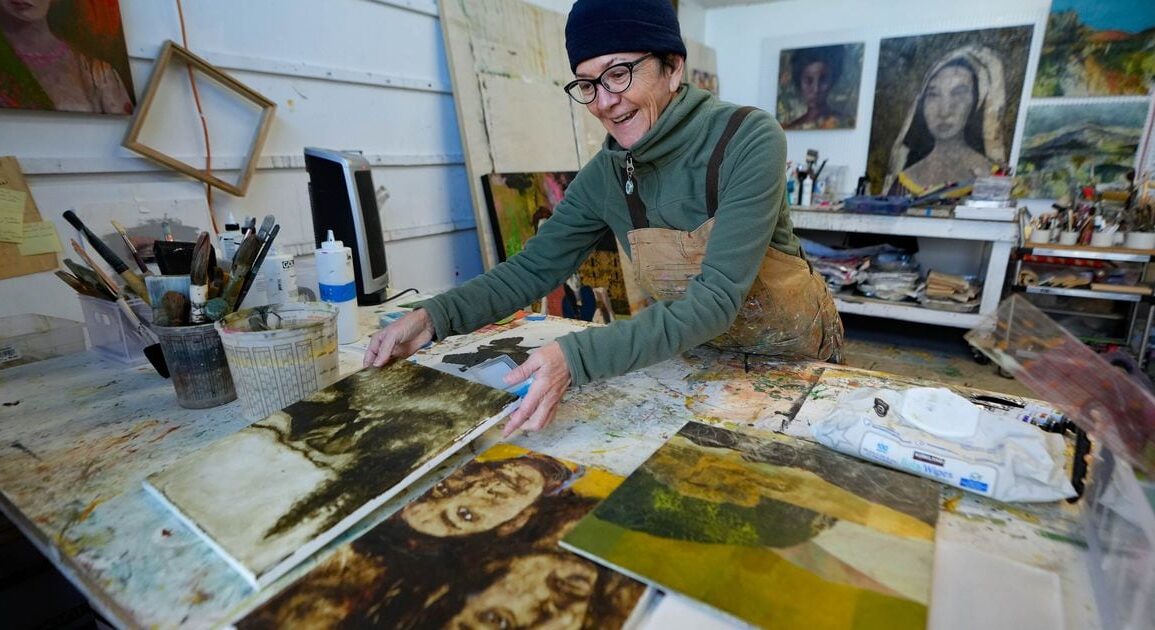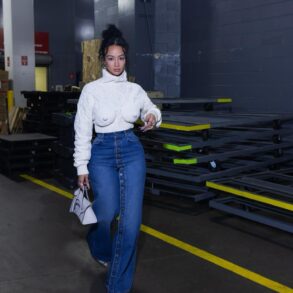
In its 85-year history, South Salt Lake has had many nicknames: Industry City, City on the Move, home to the largest collection of public art in Utah.
“We’re a small city with big opportunities,” said Edward Lopez, deputy director of Promise South Salt Lake, a city agency tasked with aiding youth, families and communities. “People sometimes don’t even realize that South Salt Lake is its own city, we are.”
In recent years, South Salt Lake has become a haven for refugee and immigrant communities. It’s a place where brewpubs and distilleries have found space to flourish. And it’s where artists have found room to create, in studio space or, thanks to the annual Mural Fest, adding color and culture to industrial walls.
“When I’m out and about in South Salt Lake, it just really feels like a city to me, in a way [that] there’s just a real mix of things that are going on,” said Tracy Strauss, an artist and co-owner of Poor Yorick Studios. “[It also] retains that space where people who’ve lived here for a really long time are still here.”
Until recently, the city didn’t have a discernible center. City officials started planning a “downtown” district, South City, in 2016 — and broke ground on its first multi-use building in November 2022.
“We’ve always been told that we’re in the middle of everything,” said Mayor Cherie Wood, a third-generation South Salt Lake resident. So Wood and the City Council, she said, “started changing the code for development in that portion of the city” to boost expansion.
(Rick Egan | The Salt Lake Tribune) Samira Harnish at the Women of the World office, on Wednesday, Oct. 4, 2023.
Welcoming the world
Samira Harnish, founder and executive director of the nonprofit Women of the World, works out of South Salt Lake — which is where many of the refugees her group helps live, she said.
She started Women of the World in 2009 in her Honda Pilot, which she still owns, and in which she has racked up some 300,000 miles driving to meet her clients, she said. Now, she has 11 case managers helping her at the center.
The state of Utah saw 1,816 refugees arrive in 2022 — and, according to The Tribune’s reporting in September, they came from all over the world, with about 38% coming from African countries, including Sudan and the Democratic Republic of Congo.
According to Women of the World’s 2022 impact report, the nonprofit served 185 new clients last year, helping secure scholarships for 14 and jobs for 30. The group has logged 624 hours of practical English lessons, 40 workshops under 14 different themes, 1,093 volunteer hours, and $456,000 saved through customized services and advocacy.
The women who get help from Women of the World are dealing with such issues as human rights abuse, long-term poverty and overcoming the disconnect from the community that being a new arrival can bring. Harnish said her group has three main programs “that lead women for self-reliance, and to be empowered”: economic success, community development and advocacy.
In Women of the World’s offices in South Salt Lake on a recent visit, women in an English as a Second Language course could be heard conjugating verbs. Photos abound, in the common areas and in Harnish’s office, of women who have benefited from the group’s services or taken part in its annual fashion show.
The plaques accompanying the photos tell the women’s stories, and some are harrowing. Take, for example, Shakila, from Afghanistan, a Shiite Muslim living in a Sunni community — and shot in both knees by male community leaders because she advocated for women’s rights and education.
She recalled in 2017, when the Trump administration suspended resettlement of Syrian refugees — and families came to the Women of the World offices to cry together. “They said, ‘Well, we’re going to be kicked [out],’” Harnish said.
One family that asked Harnish for help, she said, had relatives coming from Turkey, but the plane never took off. “I said, ‘Well, we’re all the same place, we all feel your pain.’ They said, ‘No, you don’t have family in there.’”
Harnish, originally from Baghdad, Iraq, moved to the United States in 1979. She said she started Women of the World after moving to Utah, encouraged by her husband to pursue her dream to help “forcibly displaced” women.
When she arrived in the U.S., she said, it was when forces loyal to the Ayatollah Khomeini were holding American hostages in Iran. She said Americans, confusing Iraq for Iran, pushed her away and shouted “Iranian go home.”
She started by volunteering at resettlement agencies, like the International Rescue Committee and Catholic Community Services. She also worked as an interpreter at the Huntsman Cancer Institute.
Harnish said she left a prosperous job as an engineer to start her work with refugees. “It wasn’t easy to get that position, studying and having five kids, being single for a while at that time,” she said. “I left it, and I came to this organization — and I want the people to understand [this] is not for business or for money. … What brings me pleasure is the fulfillment.”
(Chris Detrick | Salt Lake Tribune file photo) Sumeya Ahmed, 11, Innocent Byiringiro, 11, and Halima Abdinasir, 13, jump as Promise prevention specialists Rylee Black (not pictured) and Said Mohamed swing the rope at the Hser Ner Moo Community Center in South Salt Lake, on Tuesday, July 18, 2017.
Building on ‘Promise’
South Salt Lake’s refugee community was hit by tragedy in 2008, when Hser Ner Moo, a 7-year-old girl who was born in a Thai refugee camp after her family fled Myanmar, was murdered by a neighbor at the South Parc apartment complex.
Part of the city’s response to Hser Ner Moo’s murder was the creation of a new agency, Promise South Salt Lake.
“We are called ‘Promise’ because we made three big promises in the community when we first started our work,” said Edward Lopez, the department’s deputy director.
The promises, Lopez said, are “that every child has the opportunity to attend and graduate college, … that every resident has a safe, clean home and neighborhood, … [and] that everybody has the opportunity to be healthy and to prosper.”
Wood said some of the inspiration for Promise South Salt Lake was a tour, just after she became mayor in 2010, of the Harlem Children’s Zone, a nonprofit that helps children and families in New York’s Harlem neighborhood.
“That was the first time that I realized as a municipal leader that even my youngest residents, and their success in my community, was my responsibility,” Wood said.
To fulfill those big promises, Lopez said, the department gets funding, resources and support from more than 110 partners in the corporate, government and nonprofit sectors. The department offers 14 programs, placed in all of the city’s schools, as well as some outside the city limits.
The locations each focus on something different. For example, the Central Park Community Center focuses on recreation through after-school programs for elementary students and teen kids, Lopez said. “We also have provided English classes, citizenship classes and adult recreation activities,” Lopez said.
The community center, housed in what used to be Woodrow Wilson Elementary, is a small building that features a boxing gym for kids 8 to 18. It’s dedicated to the late Utah State Sen. Pete Suazo, who was the first Hispanic person to serve in the Utah Senate.
“We serve anybody who lives, works, plays or prays in South Salt Lake,” Lopez said. Central Park, he added, “has become a spot for people who [are] uninsured or underinsured.”
(Rick Egan | The Salt Lake Tribune) South Salt Lake Mayor Cherie Wood turns over a shovel of dirt for the South Salt Lake’s downtown revitalization, known as the Downtown East Streetcar District, which provide 180 multi-family housing units, on Tuesday, Nov. 15, 2022.
A city ‘on the move’
South Salt Lake — encompassing just seven square miles, from the Jordan River east to 500 East and 700 East, between 2100 South and 3900 South — boasts demographics that are more diverse than the statewide averages.
Just under 49% of the city’s residents identify as white (not Hispanic or Latino), according to 2022 U.S. Census data — compared with nearly 77% statewide. In South Salt Lake, Latinos make up 27.4% of the population, Asian Americans represent 9.4%, and African Americans represent 8.2%.
Wood, who has worked in South Salt Lake government for 30 years, said the city aims to “embrace our diversity,” and noted that between 36 and 40 languages are spoken in the city’s public schools.
Wood, a lifelong resident of the city, said she was always frustrated that South Salt Lake “didn’t have a strong identity as a community.”
When she became mayor, she said she wanted to change that. That began with the branding campaign, “City On The Move” — a nod to development in the city.
The goal, Wood said, was to create the impression of South Salt Lake as a cool, destination spot, not just a pass-through city.
Part of the city’s plan is establishing the “downtown” of South City. “We decided that we have a portion of our city — which has the northern quadrant, the ride up 2100 South and the street to Interstate 80 and Interstate 15 — [that has] massive transportation infrastructure built in there,” Wood said. “We have the F-line, the streetcar line and the TRAX line.”
As part of their research, Wood said, city officials visited Silver Spring, Maryland, outside of Washington, D.C., where an “innovation district” was being developed.
“We asked them, ‘If you could do one thing different, what would you do?’ and they said, ‘We would get a grocery store first,’” Wood recalled. The city took the advice, and arranged to bring a WinCo Foods to South Salt Lake.
Wood said her city — with a population of 26,003 (according to a 2022 U.S. Census estimate) — provides many jobs for people who live outside of it, so that the daytime population swells to between 70,000 and 80,000.
One side effect of that daily population influx, she said, is the city’s crime rate. According to FBI statistics for 2019 (the most recent period available), South Salt Lake reported 205 incidents of violent crime and 1,865 reports of property crime. Comparing those figures to Salt Lake City’s crime stats, and factoring in the population difference, puts South Salt Lake’s violent crime rate about 12% higher, and its property crime rate about 29% higher than its northern neighbor.
The FBI’s data is skewed, Wood said, because the crimes tallied are committed by people day and night — but figured per capita based on the permanent population, “So we will always be the highest in crime.”
Wood said her goals for South Salt Lake include reconnecting the community again after the COVID-19 pandemic, and figuring out how to navigate “big-city issues as a small city.”
(Francisco Kjolseth | The Salt Lake Tribune) A mural by Phoebe Joynt in South Salt Lake, Wednesday, October. 31, 2023.
Alcohol and art
South Salt Lake is home to the Historic Scott School, which opened in 1890 as the original Granite High School and is the oldest continuously operating school in Utah. South Salt Lake also boasts the world’s first Kentucky Fried Chicken location, the only Chinatown in the Intermountain West, the main offices for Salt Lake County’s government, and more than 3,200 businesses from small shops to manufacturing hubs.
At least five breweries and three distilleries have opened in the last few years in South Salt Lake. West Temple, where four of those businesses sit, has earned the nickname Brewery Row.
Ryan Miller, owner of SaltFire Brewing Co., said the appeal of setting up in South Salt Lake came from “the ease of getting licensed and permitted in South Salt Lake, as opposed to downtown Salt Lake City. The price for space was a consideration for us.”
Since SaltFire opened in 2018, Miller said, the area has grown. “Our residential density is increasing, so more people means more customers,” he said.
The city also is building a reputation for art. Some of that can be credited to Mural Fest, started in 2018. Each May, artists enter for the chance to paint one of 10 murals on the city’s industrial businesses, adding bright colors to large, plain walls.
One of those buildings is home to Poor Yorick Studios, owned by artists Brad Slaugh and Tracy Strauss. The studios provide workspace for more than 40 artists, working across mediums.
“We actually had an art studio full of artists that was in Salt Lake City proper for about five years,” Slaugh said, adding that they had a second studio north of downtown in the Marmalade district. After leasing for years, and dealing with rent increases, Slaugh and Strauss bought their South Salt Lake building in 2006.
“The thing about our space is that it’s for artists to create their work, but twice a year we do have an open studio event,” Slaugh said.
Strauss said the city has fostered an environment for the arts, with such events as the Mural Fest and Craftoberfest.
“What that’s doing is creating an atmosphere where people in the community want to come out and interact with one another,” Strauss said. “It’s just very supportive to be in a place where people from all walks of life are enjoying a similar space in the same way. It fosters community in a way.”
Slaugh said that when they first moved into the neighborhood, “it didn’t seem like there was anything going on. … [Now,] it does feel to me like South Salt Lake [is] coming into its own.”
This post was originally published on this site be sure to check out more of their content.







